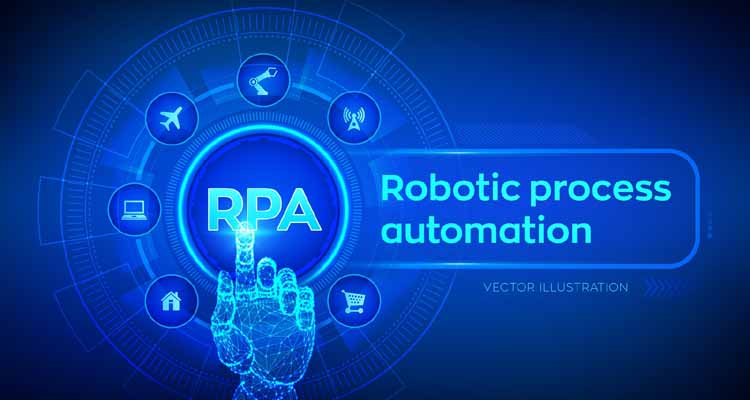Recently, an examination led by Health Leaders outfitted discoveries that about three out of four medical clinics and wellbeing associations consider ‘exorbitant expenditure’ and ‘inefficiency’ as two of their highest torment focuses.
Ever since the origin of Robotic Process Automation or RPA, complex verticals, such as the, Banking, Manufacturing, and Telecommunication Sector etc., have seen rapid transformational patterns.
In a similar manner, the presentation of RPA in the healthcare services industry has certainly helped in transforming this particular segment.
As the quantity of patients expand, healthcare providers are addressed to oversee stock sums, bolster persistent document digitization, upgrade meeting arranging, and perform bookkeeping and guarantee to process. Overall, healthcare providers perform different procedures and obligations, for example, overseeing bookkeeping and solicitations, onboarding patients, assigning therapeutic specialists, gathering quiet records and data, as well as providing necessary remedies.
Customarily, these obligations were controlled physically, which could be monotonous, tedious, and error prone to execute and follow these procedures alongside key capacities. Anyway, as the healthcare services industry persistently attempts to reduce expenses and improve proficiency, perhaps the automation of manual errands is the key to significant improvement.
Perhaps the utilization of RPA in the Healthcare sector will exhibit an achievable answer regarding the few concerns identified within the business. How about we focus on them?
Rearranging the Planning of Patient Meetings
Patients frequently plan internet meetings. According to the enlistment framework, patient private information, diagnosis, and insurance subtleties must be accessible to the healthcare organizations. Likewise, patient meetings should be coordinated keeping in mind the timetables of particular doctors and their accessibility to the emergency clinic. At that point every patient gets the appointment checkup ‘as per their needs.
The designing of gatherings for patients who are dependent on the diagnosis of specialists and have different necessities, can be easily catered to, with the help of RPA bots. RPA can be utilized to check and understand data in order to send a record to a delegate to tackle the request. Also, when doctors are inaccessible for their arrangement, RPA bots can notify the respective patients.
Extraction of Patients Data
RPA instruments can aid by helping healthcare organizations to acquire data from digitized or physical clinical documents. They can automate the search method for the correct records by working through a database and successfully route them to the respective individual within the healthcare organization.
Certain information extraction challenges that surface while utilizing AI alternatives include:
- Automating data recovery measures, such as, printing or transmitting records for worker usage.
- Accelerating Identification without sacrificing precision.
- Metadata to stop from opening documents to check them.
An archive’s metadata can be recognized with the help of RPA software, such as by scanning PDF filenames, checking their created date, or specific EMR paper ID numbers. However, this kind of information is found by opening a document or envelope’s attributes.
Financial Management
Revenue Cycle Management in healthcare services is extremely essential in order to protect a healthcare providers’ long term viability and profitability standards.
By reducing the time between shipments and payments of patient facilities, revenue cycles can be optimized. With the help of RPA, possibilities include – reducing the dissents of cases and guarantee claim timelines for resolutions, dispose of manual mix-ups, and permit quicker transaction processing.
The utilization of medical codes, handling of payers, and management of patient rehabilitation is done with the help of a multi-step medical accounting strategy. This requires both internal and external stakeholders to work together with every partner’s manual data compilation. RPA can be help by consolidating each partner’s sub-processes into a concise, seamless framework.
Additionally, with the help of RPA, Medical Billing Service organizations can automate the accounting technique for their healthcare provider clients therefore bringing about impressive time savings.
Executing Release Instructions
Patients are by and large provided with prescriptions, medications, and are expected to follow rules post-discharge to help them with specific ailments. It is a tedious task for healthcare associations to check whether all the discharge directions are easily handled by medical attendants. With the help of RPA bots, accurate directions regarding patient discharges can be given and moreover patient’s updates regarding their prescription pick-ups can be provided.
Similarly, clinics or hospitals can inform their customers of impending doctor or specialist appointments as well as therapeutic tests, just with the help of RPA.
That’s not all; RPA bots can additionally alarm healthcare providers if any individual requires any further support. In order to improve the HCAHPS (Hospital Consumer Assessment of Healthcare Providers and Systems) results, RPA programming is deemed critical. Throughout these processes, healthcare providers can indeed improve patient related information in order to provide prevalent medicinal services, as well as reduce readmissions.
Hospital Self-Service Terminals
Hospitals are provided with opportunities for RPA bots to automate patient registrations as well as check-ins, especially where emergency rooms are concerned. With the help of displays, they can easily set up self-service kiosks that help patients to sign in their respective information. Scanners can be placed on the booths in order to draw a picture of the insurance card and confirming proof of the patient if necessary. With this then RPA software would be able to automate the responses of the kiosk to the patient’s input, which would fuse their information into a triage scheme and empower the front office staff to check the information of every patient.
Conclusion
CIGNEX Datamatics drives innovation and there is no doubt that RPA can be deemed the torchbearer of this effort. Implementation of RPA requires a reasonable amount of time and energy, but goes far beyond, as it helps healthcare providers not only reduce costs but gain efficiency, as well as increase the quality of patient care and much more. Thinking of adopting RPA within your organization? You’re at the right place. Explore RPA now.















